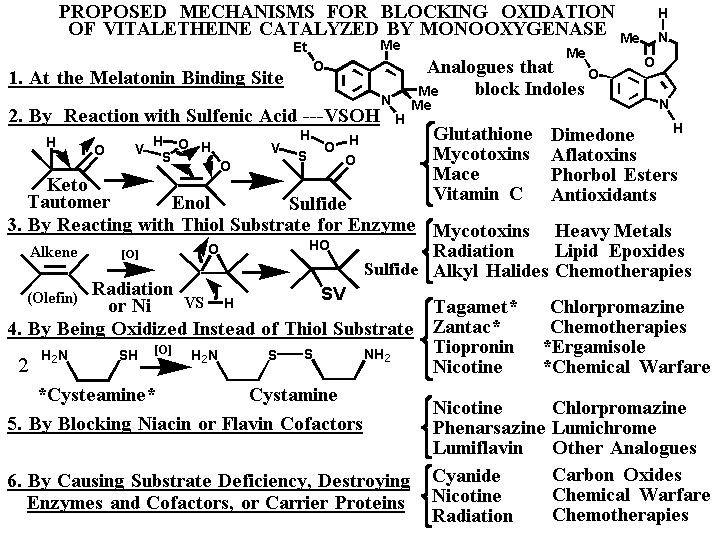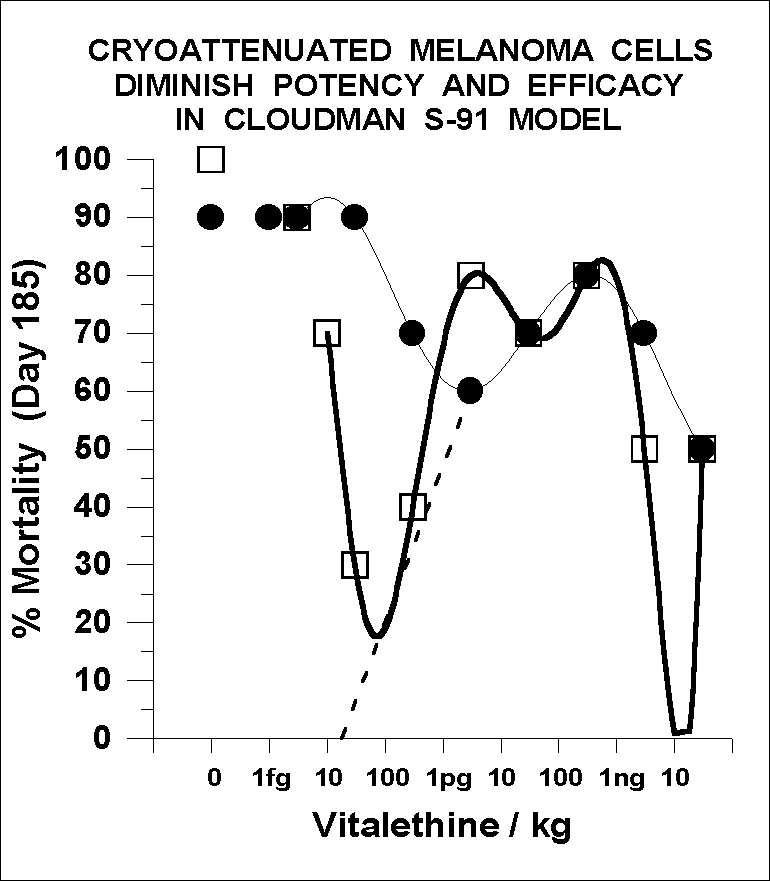Copyright © 1996, 1997, 1998, 1999, 2000, 2001 by Galen
Daryl Knight and VitaleTherapeutics, Inc.
Environmental Factors Affecting the
VitaleTheine Modulator/Monooxygenase System
-
Nutritional Deficiencies--such as Cysteine
and Pantothenic Acid
-
Savvy Cheese--a guide compiled from
a US Department of Agriculture database
-
Light Pollution--and Exposure to Ultraviolet
and other Forms of Radiation
-
Aflatoxins and Mycotoxins--in our Food
and Related Chemical Toxins
-
Toxic Metals--such as Lead, Cadmium,
Mercury, Bismuth, Plutonium, etc.
-
Arsenicals--such as Phenarsazine used
in "Pressure-treated" Lumber
-
Chemical Warfare Agents--such as Phosgene,
Sarin, HN1, Lewisite 1,
Mace, Mustard Gas, Soman, Tabun, and VX
-
Key Pathways--Regulated by Monooxygenase
and Vitaletheine Modulators
-
Triclosan Toxicity--to Thyroid Hormone
Metabolism (Wilson's Syndrome?)

It has been determined that a variety of toxins probably poison the
ability of the vitaletheine modulators to prevent
and treat cancer. Most notably among these toxins are the dead
cancer cells , themselves, that with conventional chemotherapy and
radiation are killed and left in situ to be readsorbed, which releases
the carcinogenic substances that caused the cancer in the first place to
produce "metastases" and new cancers elsewhere. When the cancer cells die,
and in the process rupture and lose their intracellular antioxidants, the
membrane fragments resulting oxidize according to reaction #3., supra,
and also poison the very vitaletheine modulator-dependent (VSH) immune
system that would normally have prevented and treated the cancer. This
is graphically illustrated by the following figure in which the therapeutic
response to Vitalethine (open squares) is attenuated by the coadministration
of dead cancer cells (filled circles):

Note that the extrapolated efficacy in the presence of dead cancer cells
drops from about 80% survival to only about 40% survival with the coadministration
of only a tiny bolus of attenuated tumor cells. From this data, one can
crudely extrapolate (dotted line) a completely effective therapeutic window
for vitalethine as being about 10 fg/kg or less, a situation that would
reflect a theoretical complete abscence of environmental toxins and dead
cancer cells. Since this amount of vitalethine is flanked on either side
by the amounts of plutonium and aflatoxin
that cause cancer, this is the range of vitalethine concentrations thought
to be produced, naturally, when the body is well-nourished and free of
environmental toxins.
This theory is supported by the recent finding that a completely pure
preparation of the monooxygenase enzyme
thought to regulate cholesterol biosynthesis and cancer gene (oncogene)
expression, and probably most other biochemical pathways in the body, has
a molecule on it that is the same size
(M+=383) as vitalethine. This enzyme indirectly catalyzes the
oxidation of cysteine residues in proteins and peptides to disulfides,
and mixed disulfides with other small molecular weight thiols, providing
a vast array of modulation for the various biochemical pathways in the
body.
Thus, the insights gained in the discovery of the vitaletheine modulators
set the stage for exciting new developments in the fields of environmental
toxicology and nutrition for the prevention and treatment of a variety
of supposedly intractable and incurable diseases, such as cancer
and heart disease.
GO TO:
